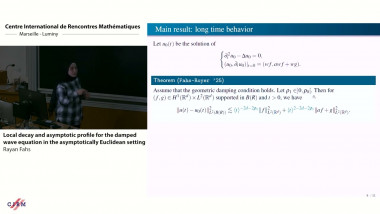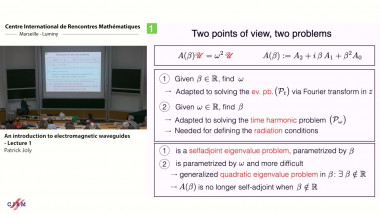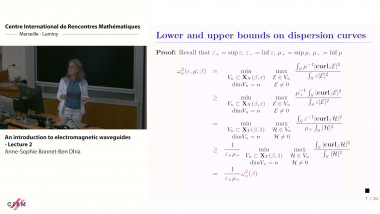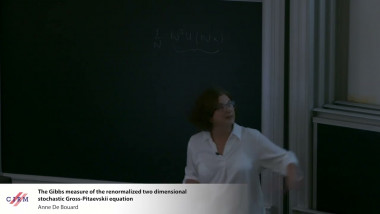
Local decay and asymptotic profile for the damped wave equation in the asymptotically Euclidean setting
By Rayan Fahs

An introduction to electromagnetic waveguides - Lecture 1
By Patrick Joly

An introduction to electromagnetic waveguides - Lecture 2
By Anne-Sophie Bonnet-Ben Dhia

Edge states in periodic and aperiodic structures
By Michael Weinstein

The Gibbs measure of the renormalized two dimensional stochastic Gross-Pitaevskii equation
By Anne de Bouard











